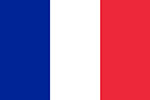Orientalisme
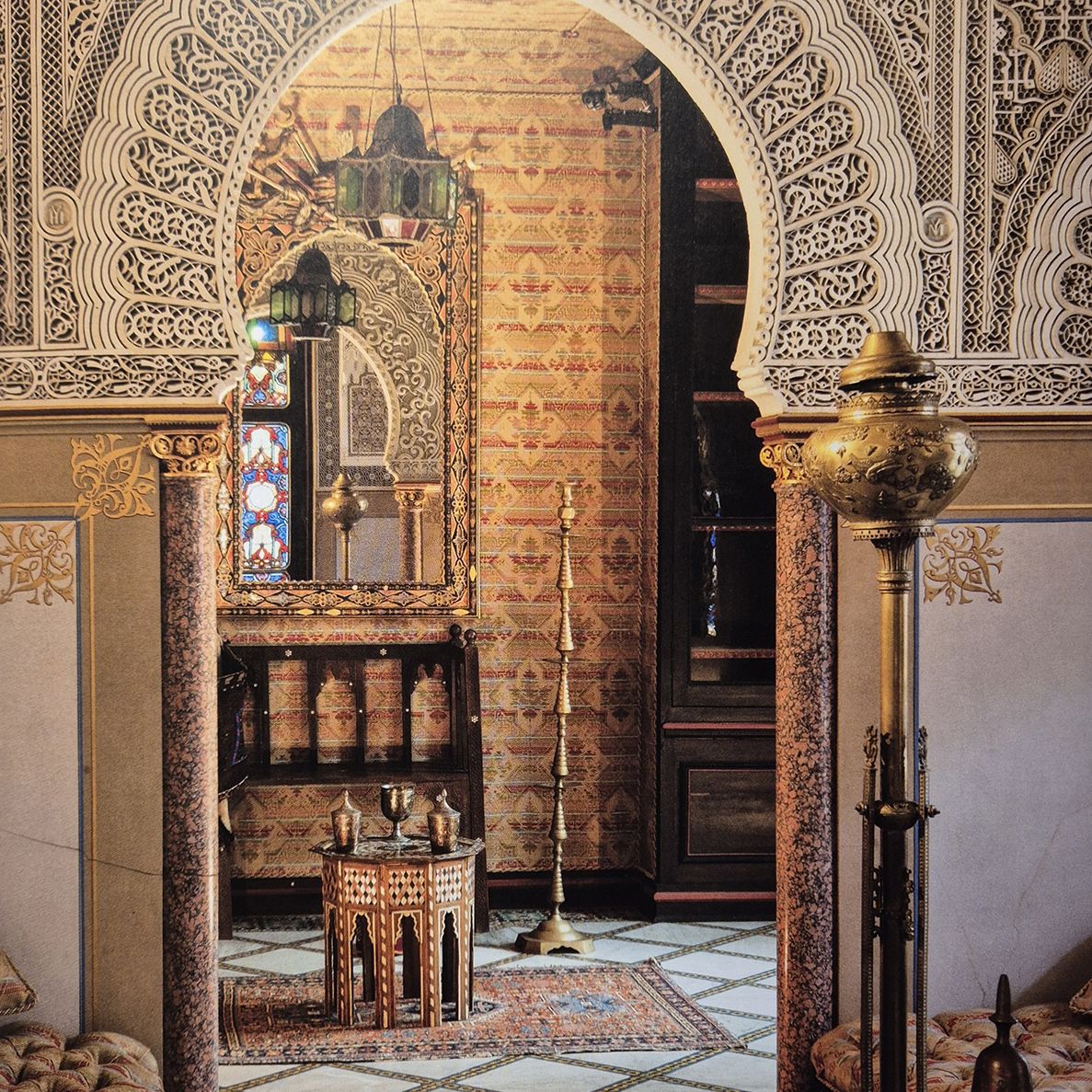
Salon mauresque du château de Monte-Cristo – port Marly -1845
A fascination that goes back a long way
The Orient has long nourished the imaginations of adventurous travelers, attracting curious explorers and men of science. Artists and writers have found it an inexhaustible source of exotic inspiration.
Molière’s Le bourgeois gentilhomme (1670), for example, is a fantasy of the Orient. The first French translation of the “Thousand and One Nights” dates back to 1704, without illustrations and, of course, with Western illustrations in subsequent editions. Other examples include Montesquieu’s “Persian Letters” (1721), Mozart’s operas (The Abduction from the Seraglio 1782), Hugo’s “Oriental” (1829)…
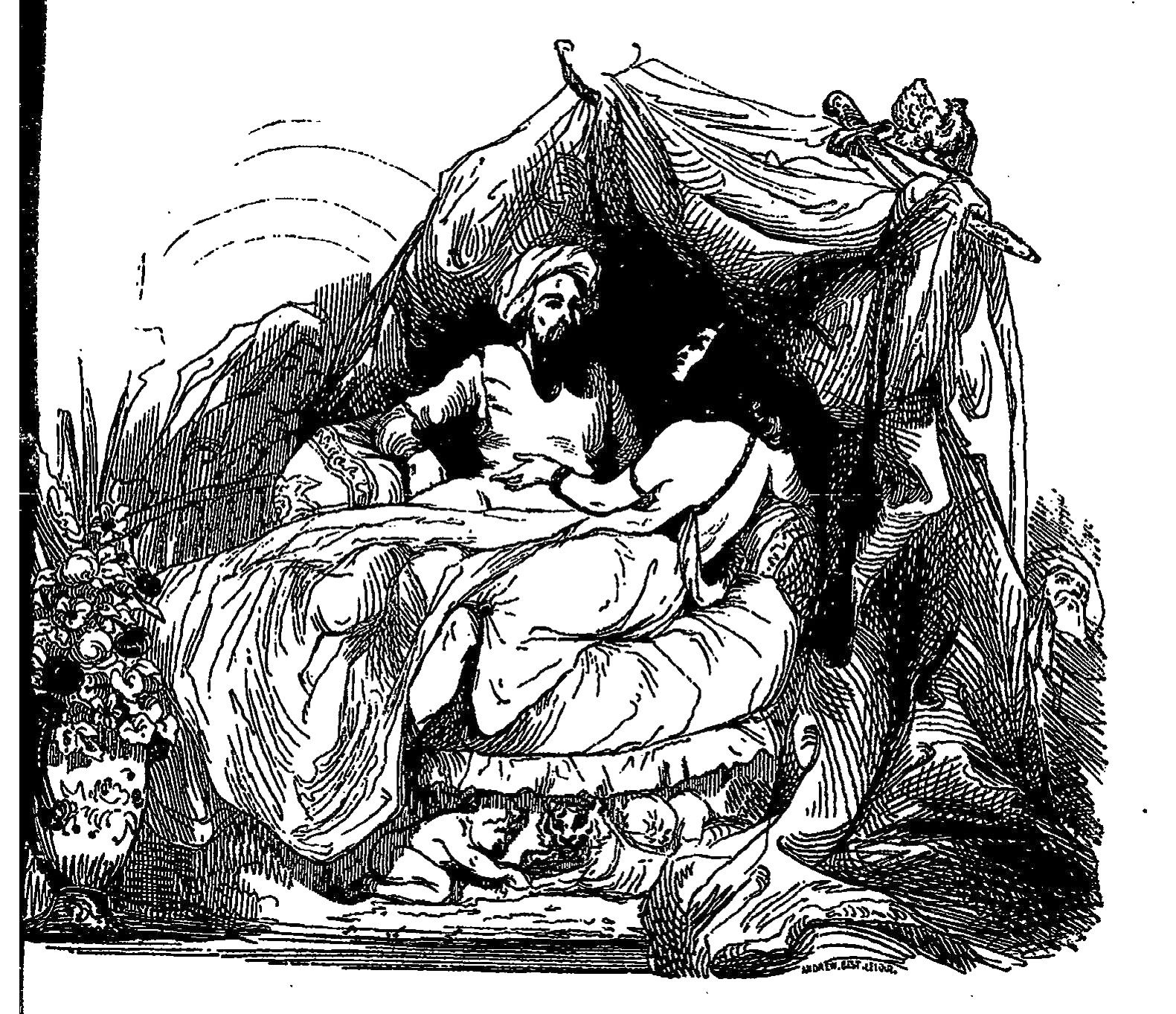
Les mille et une nuits – illustrations de l’édition de 1839 – BNF
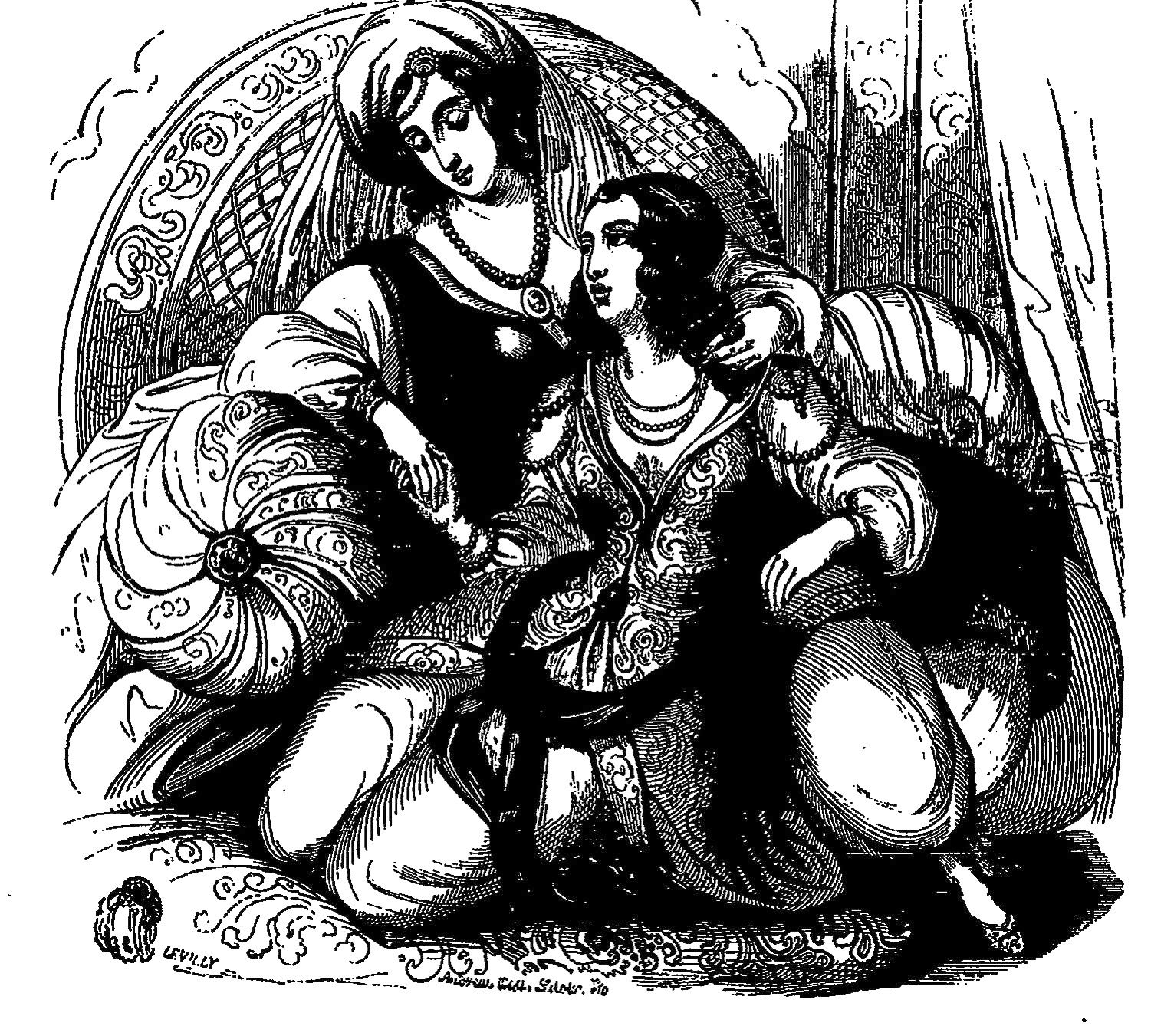
Orientalism in the 19th century: from romantic vision to authenticity.
The term “Orientalism” first appeared in the early 19th century. It refers to the way in which the Orient is seen by the West, the way in which landscapes and people are viewed by Westerners imagining the Orient. Far from reality… Literature, painting, music, photography, architecture – the entire artistic production of the 19th century is tinged with Oriental influence, in a romantic vision inspired mainly by Spain, India, Turkey and the Maghreb countries.
On Parisian boulevards, Turkish cafés abounded, and public balls were decorated in Moorish style. World’s fairs offered easy escapes to exotic lands. Oriental decorative elements are also found in private homes.

l’illustration 2 mars 1867 – quartier turc – Gallica
Towards the middle of the 19th century, true lovers of the Orient set off on long journeys, made easier by advances in transport. As well-informed amateurs, painters, writers, photographers and architects were able to depict a more authentic Orient.
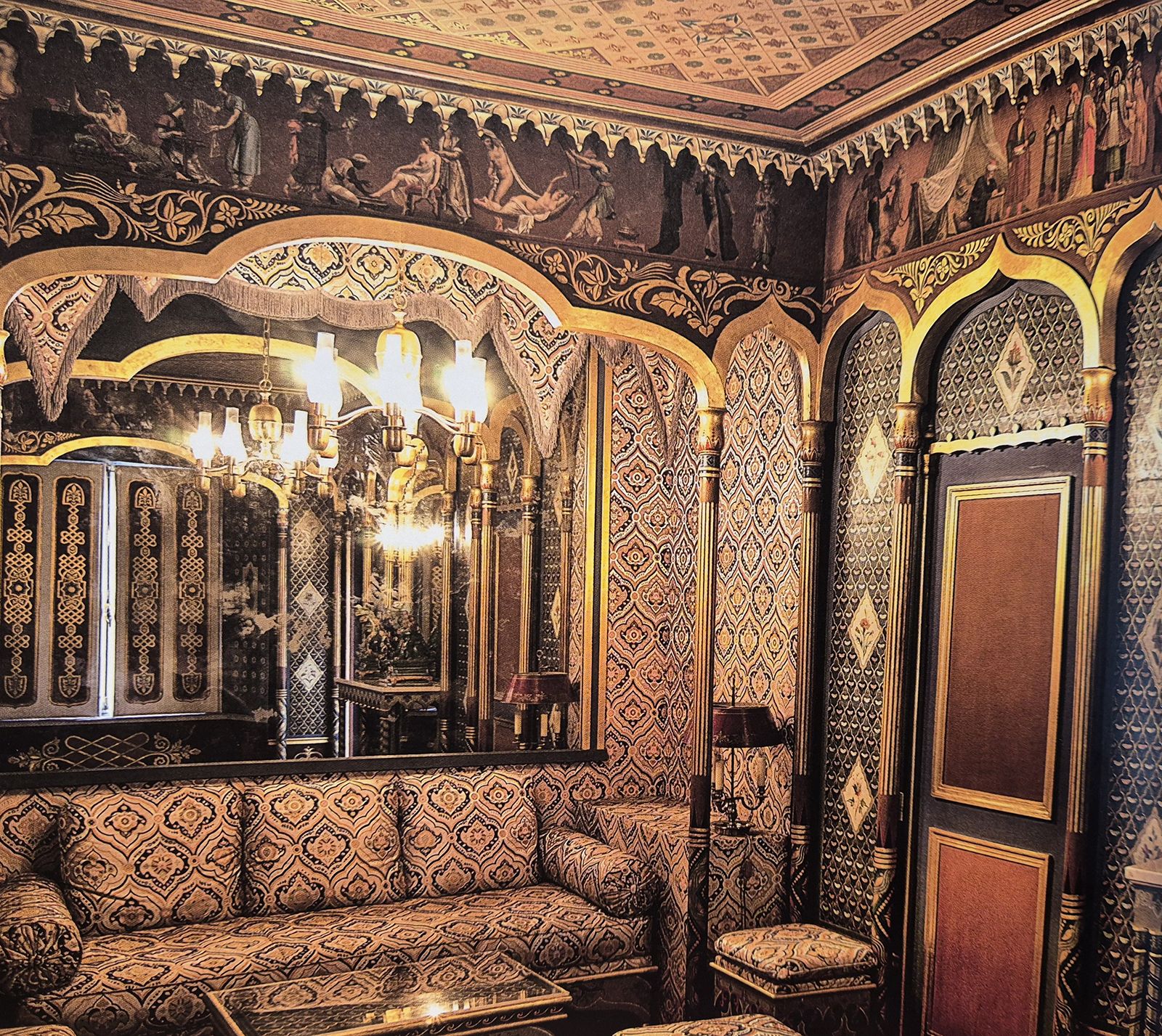
Boudoir turc, hôtel de Beauharnais – Paris 1807
Here are a few examples of well-known travellers:
Eugène Delacroix (1798-1863) accompanied a diplomatic mission to the Sultan of Morocco for 7 months in 1932. The experience left a deep impression on him, and he often returned to the Moroccan theme.
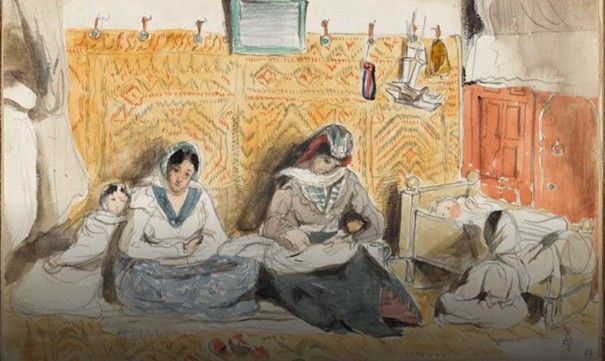
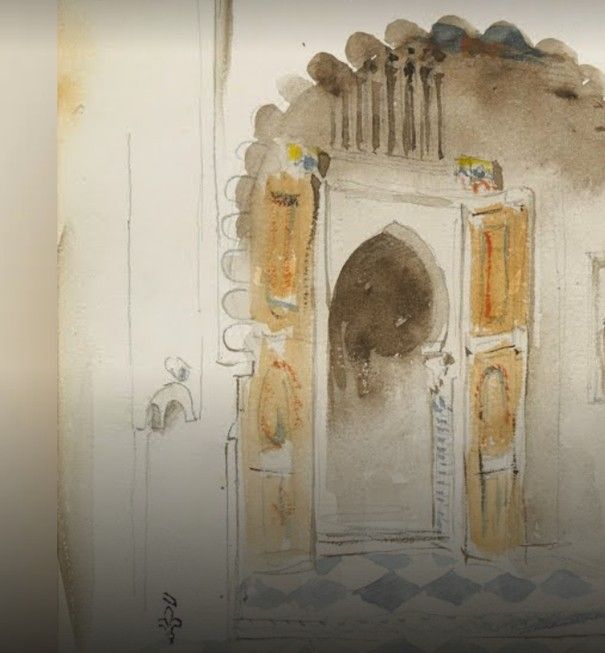
Carnets de voyage d’Eugène Delacroix ( Musée du château de Chantilly)
After a trip to Algeria in 1846, Alexandre Dumas père commissioned two Tunisian artists to create a magnificent Moorish salon in his neo-Renaissance château at Port Marly.
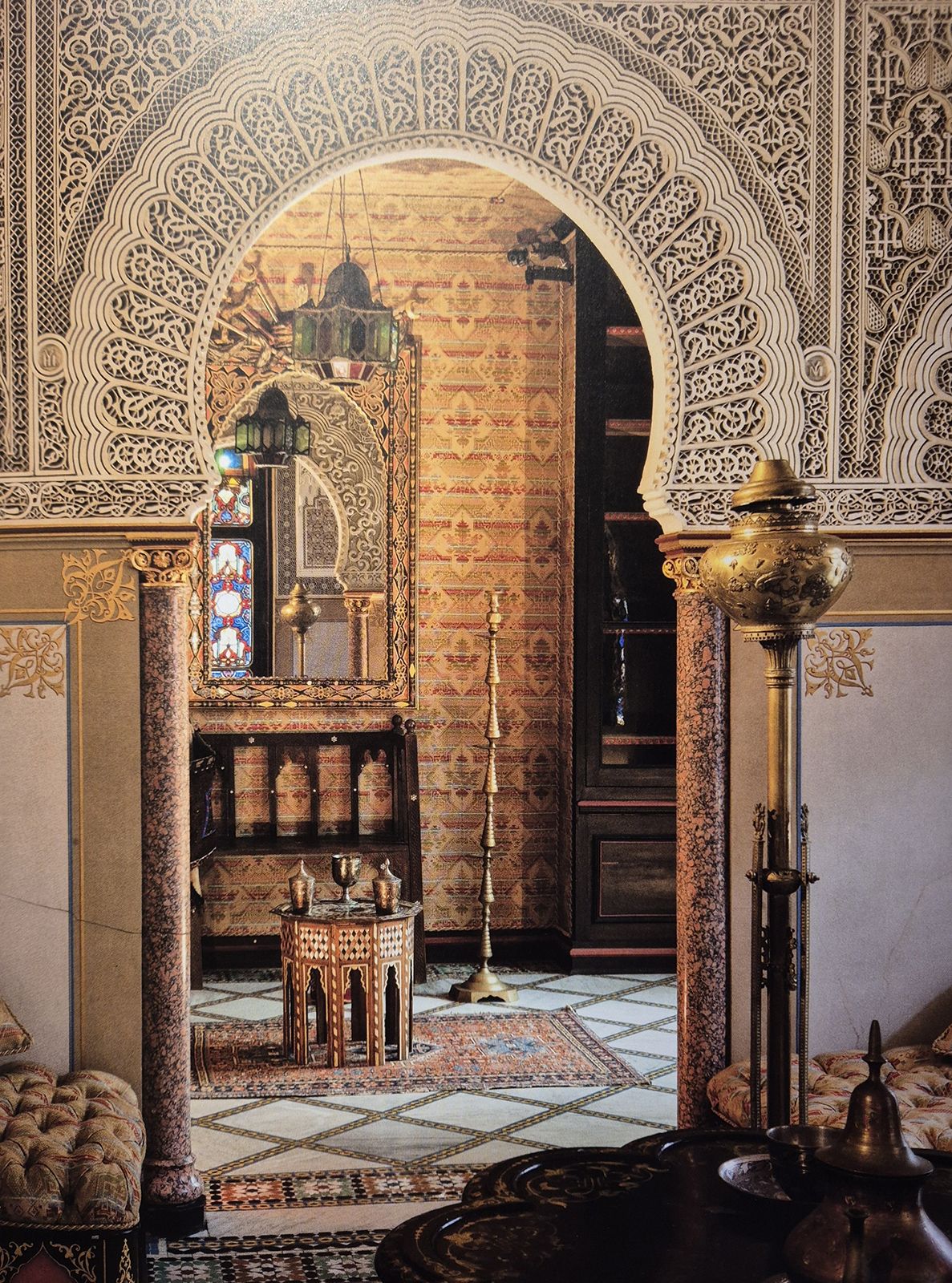
Salon mauresque – Château de Monte-Cristo – Port Marly
Contemporary with the construction of Château de Calan was naval officer Pierre Loti (1850-1923), who drew on his travels to write his novels, including “Aziyadé” in 1879 and “Phantom of the Orient” in 1892. He transformed his birthplace in Rochefort into an oriental palace.

Maison de Pierre Loti – Rochefort (Charente Maritime)
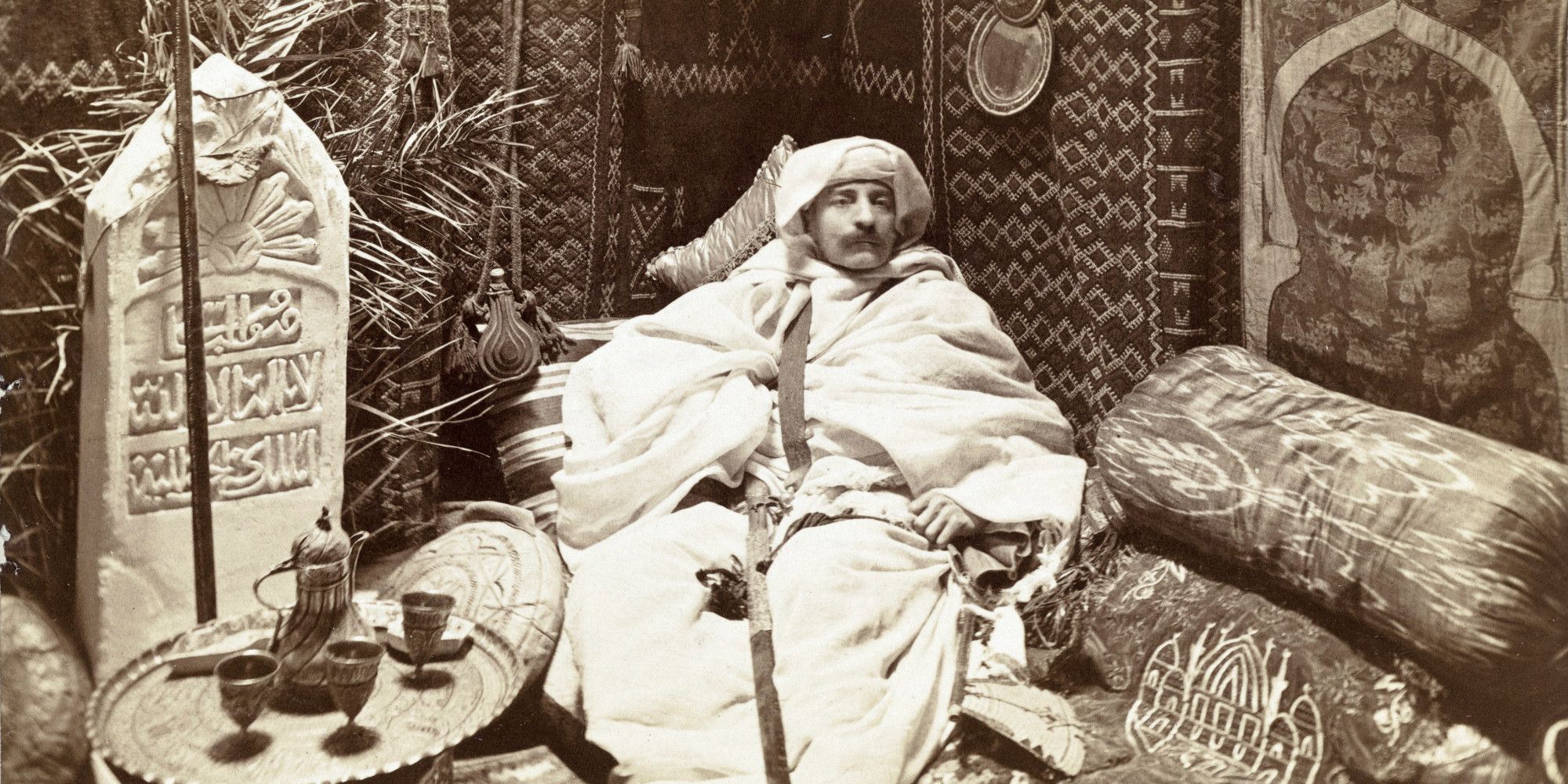
Portrait de Pierre Loti en turc – BNF
Orientalism in architecture
The craze for Orientalist travel and the new artistic passion that followed inspired wealthy owners, scholars and collectors. They had villas built in an Oriental architectural style, whose archaeological reality was sometimes transformed into a Western setting.

Villa Sans-gêne – Agon-Coutainville – 1896
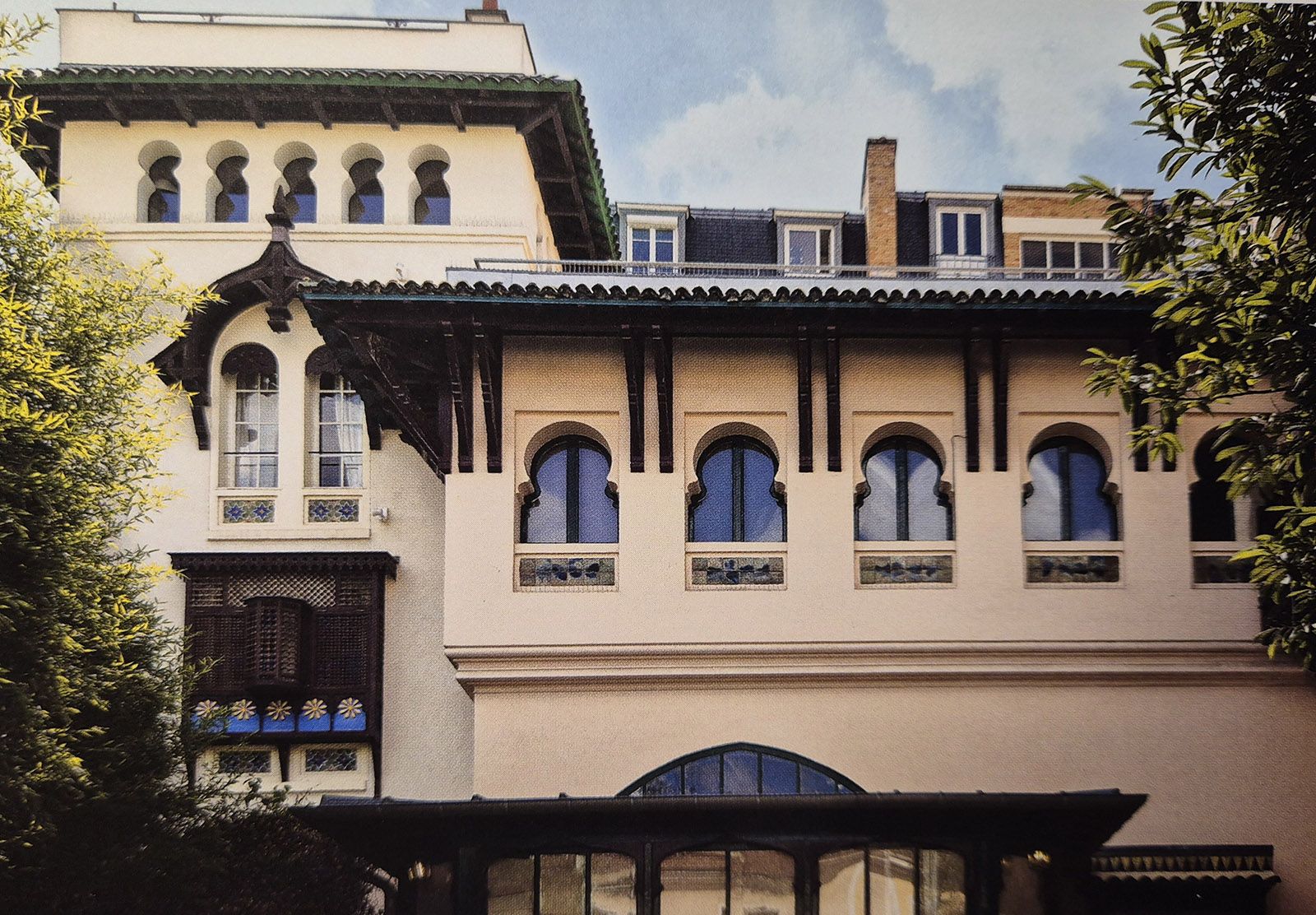
Villa mauresque – Levallois Perret – 1892
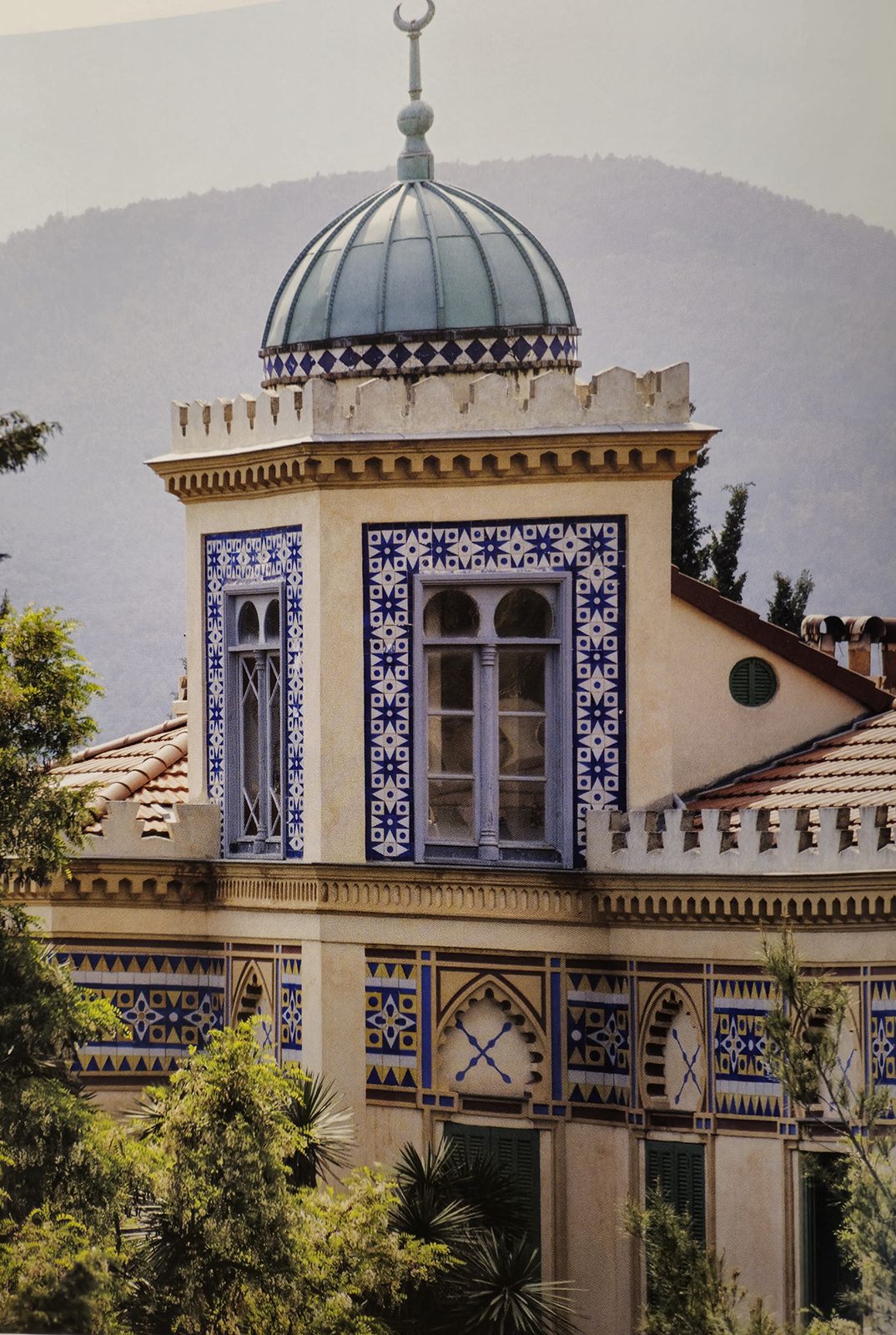
Villa mauresque – Hyères – 1881
Photo Gallery

Institut de biologie marine Michel Pacha – La Seyne sur Mer – 1900
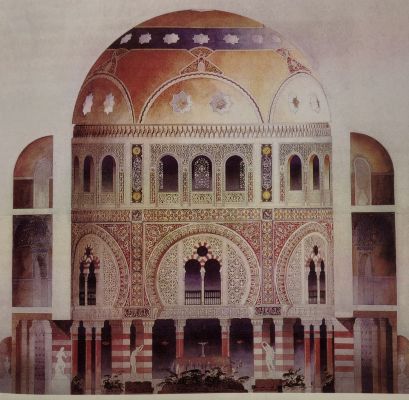
Etude pour bains publics – ALexandre Marcel – 1880

Bains dunkerquois – 1897
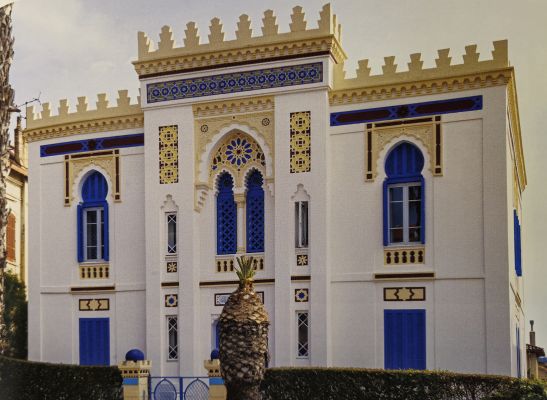
Etablissement thermal des Salies de Bearn – 1889
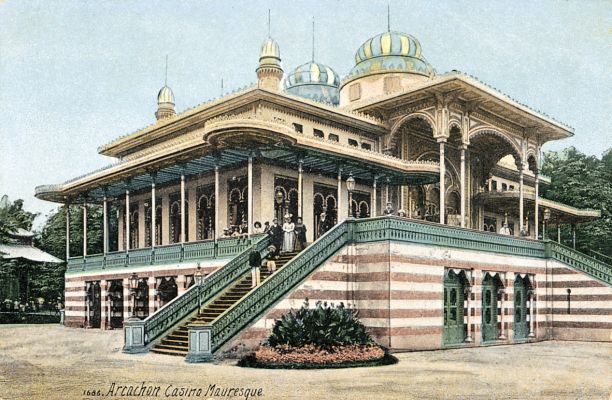
Csino mauresque d’Arcachon (détruit par incendie en 1977) – 1863 – © Patrick Charpiat
Scroll through the images from left to righ
But these magnificent creations require considerable maintenance. As the years went by and the owners changed, they hardly survived. The parks were divided up, and many villas were transformed into hotels or demolished.
On the Brittany coast, there are few examples of this Orientalist architectural vogue.
The “Prince of Wales Pavilion”, commissioned by the future Edward VII to represent India at the 1878 Universal Exhibition in Paris, consisted of two parts, one of which was sold to the seaside resort of Paramé for installation on the seawall in 1881 and rented out as a holiday home. It was destroyed by a storm around 1905. The other part is in Courbevoie, in the Parc de Becon, and still exists.
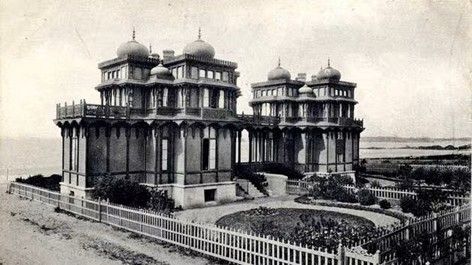
Pavillon du prince de Galles – 1878

Villa Constantine – Saint Lunaire – vers 1880
In Saint-Lunaire, the Villa Constantine, built like the Villa Kermor around 1880 on the Pointe du Décollé, was transformed in the 1960s before being demolished shortly afterwards.
Villa Kermor is the only remaining example of these “follies” in Brittany.
Sources :
Architectures d’Orient en France - Nabila Oulebsir et Bernard Toulier – photographies de Jean-Christophe Dartoux – Ed Picard – 2018
L’orientalisme architectural, entre imaginaire et savoir – Nabila Oulebsir et Mercédès Volait – INHA – 2006
L’orientalisme au 19e siècle : de la fiction vers la réalité – Nathalie H. Rouphael – Connaissances et savoirs - 2015
